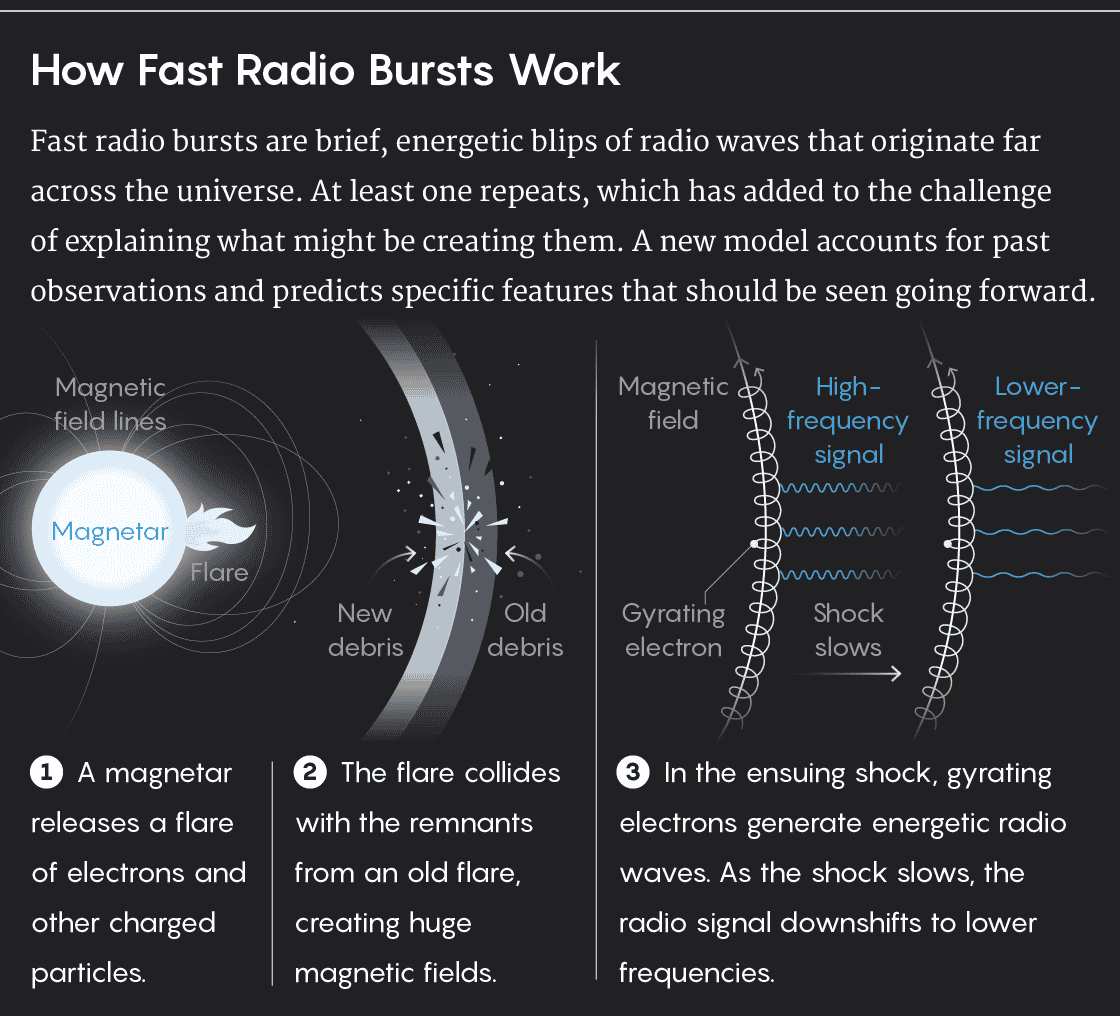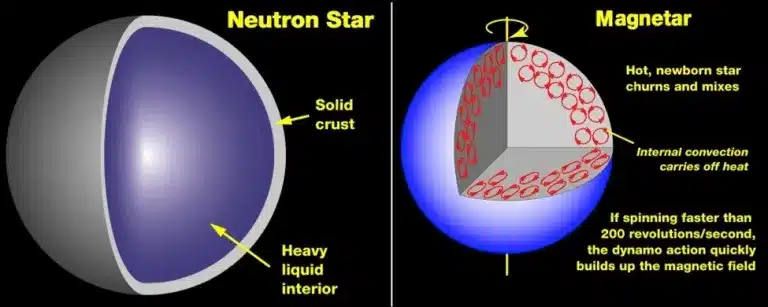- FRB are bright bursts of radio waves (radio waves can be produced by astronomical objects with changing magnetic fields) whose durations lie in the millisecond-scale, because of which it is difficult to detect them and determine their position in the sky.
- It was first discovered in 2007 when scientists combed through archival pulsar data.
- Pulsars refer to spherical, compact objects in the universe, which are about the size of a large city but contain more mass than the sun.
- They often look like flickering stars but are not stars.
- A defining property of these bursts is their dispersion (scattering or separation), the bursts produce a spectrum of radio waves, and as the waves travel through matter, they spread out or disperse with bursts at higher radio frequencies arriving at telescopes earlier than those at lower frequencies.
- Dispersion can result in signal degradation in many applications, especially over large distances.
- This dispersion allows researchers to learn about two important things:
- They can measure this dispersion to learn about the stuff that radio bursts pass through as they travel toward Earth
- They can indirectly determine how far apart things are.

Origin of Fast Radio Bursts (FRBs)
- FRBs have been spotted in various and distant parts of the universe, as well as in our own galaxy. Their origins are unknown and their appearance is highly unpredictable.
- The astronomers have suggested that the candidates for the sources of FRBs are the superdense neutron stars left over after a supernova, or magnetars (neutron stars with ultra-strong magnetic fields).
- The CHIME project has nearly quadrupled the number of fast radio bursts discovered to date.
- The telescope has detected 535 new FRBs in its first year of operation itself, between 2018 and 2019.
- With more observations, astronomers hope soon to find the origins of the FRBs.
Chime:
- It is a novel radio telescope that has no moving parts. Originally conceived to map the most abundant element in the universe – hydrogen – over a good fraction of the observable universe, this unusual telescope is optimized to have a high mapping speed.
- It is located at the Dominion Radio Astrophysical Observatory, operated by the National Research Council of Canada in British Columbia, Canada.
- The telescope receives radio signals each day from half of the sky as the Earth rotates.
Magnetars
- A magnetar is a type of neutron star.
- They are the most powerful magnets in the cosmos.
- Their magnetic fields are 5,000 trillion times more powerful than that of the Earth.
- They are relatively rare objects, with only about thirty having been spotted within the Milky Way so far.
- How magnetars form:
- During the course of their evolution, massive stars – with masses around 10-25 times the mass of the Sun – eventually collapse and shrink to form very compact objects called neutron stars.
- A subset of these neutron stars are the so-called magnetars that possess intense magnetic fields.
- These are highly dense and have breathtakingly high rotation speeds – they have rotational periods that can be just 0.3 to 12.0 seconds.
- High luminosity:
- Magnetars have high magnetic fields in the range of 1015 gauss and they emit energy in the range given by luminosities of 1037 – 1040 joules per second.
- Compare this to the luminosity of the sun which is in the order of 1026 joules per second – a factor of at least 1011 lower. Further, these magnetars emit violent flares.
- Energy dissipation:
- Eruptions in magnetars are believed to be due to instabilities in their magnetosphere, or “starquakes” produced in their crust – a rigid, elastic layer about one kilometre thick. This causes waves in the magnetosphere, and interaction between these waves causes dissipation of energy.
- Magnetars are very difficult to observe when they are silent. It is only during a flare that they can be observed, and these flares are so short-lived that it presents a formidable problem.
- Cosmic lighthouses:
- A few magnetars are also pulsars, those celestial lighthouses that sweep the sky with powerful radio beams (and, rarely, beams of visible light too, such as in the case of the Crab Nebula).
- Recently, detecting a magnetar that is also a pulsar enabled astronomers to establish an accurate distance to a magnetar for the first time.

Significance of Studying FRBs:
- The unique properties of fast radio bursts and their host galaxies combined with recent technological advancements have given researchers hope that these phenomena can be used to answer some long-standing questions about the universe.
- It can be used to understand the three–dimensional structure of matter in the universe and to learn about poorly understood early moments in the evolution of the universe.
